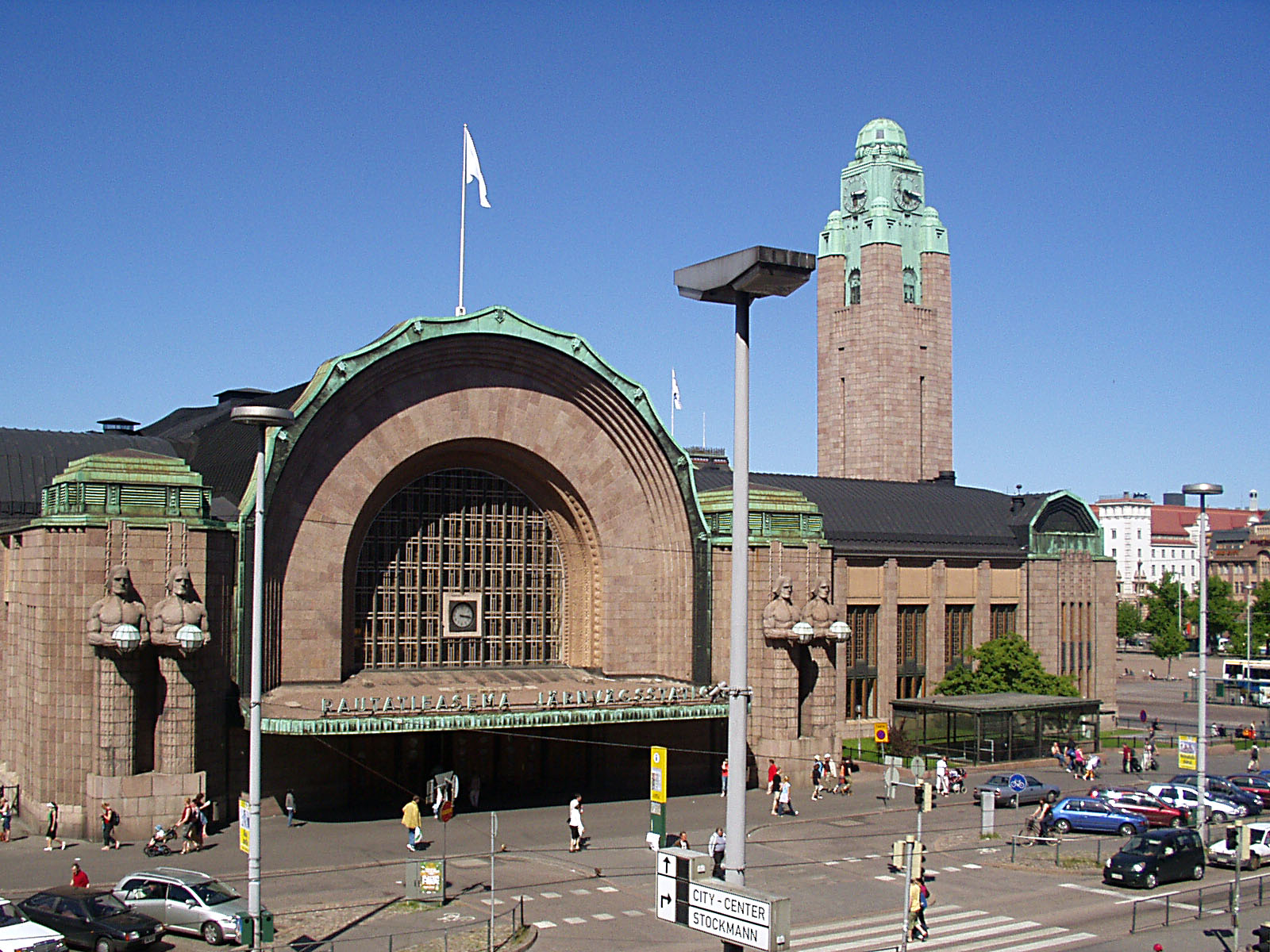Вокзал Хельсинки-Центральный – главный транспортный узел Финляндии.
Хельсинки-Центральный – тот самый железнодорожный вокзал, который знаком многим путешественникам, приезжающим в столицу Финляндии на автобусах или поездах. Это памятник архитектуры и в то же время главный транспортный узел страны.

По традиции – небольшой экскурс в историю здания. Первое здание Центрального вокзала было построено в 1861 году, а открылся он лишь спустя год. Постройка больше напоминала загородную усадьбу. Трехэтажное деревянное здание, облицованное камнем, так можно было охарактеризовать первый вокзал Хельсинки. Через 30 лет численность населения и пассажиропоток начал стремительно расти, что подтолкнуло Железнодорожный совет на строительство нового здания. Процесс на первых этапах оказался не быстрым: долго не объявлялся конкурс на строительство, не сразу выбирался проект. Одобрен был проект архитектора Элиеля Сааринена лишь в 1904 году, а к строительству приступили спустя год. Стройку останавливали из-за начала Первой мировой войны, а в 1919 году вокзал открыли, несмотря на то что оно не было закончено. Достраивали здание последующие 6 лет. Необычным решением стало то, что старое здание не сносили сразу. Оно функционировало и постепенно сносилось, переводя службы в новые помещения.
По настоящее время вокзал является образцом финского модерна. Его стены и своды выполнены из железобетона, облицованного натуральным гранитом. Украшает вокзал две пары статуй суровых мужчин, держащие сферические лампы, загорающиеся в темное время суток. Здание очень легко узнать, так как его башня с часами стала символом города. Она возвышается почти на 50 метров над землей, поэтому если вы первый раз в городе или боитесь заблудиться, ориентируетесь на нее. Назначайте место встречи у вокзала, к нему идет множество улиц, и башня легко просматривается с разных сторон города (но не отовсюду). Вокзальная площадь по-фински: Rautatientori (произносится как «раутатиентори»), а вокзал – Rautatieasema («раутатиеасема»). Возьмите на заметку, в городе основной язык финский и шведский, а не все таксисты знают русский и даже английский язык. Либо имейте при себе записанный адрес вокзала: Kaivokatu, 1. Это позволит проще ориентироваться в городе.

Кроме того, даже если вам не нужен вокзал по прямому назначению, заглянуть туда стоит. На вокзале (а также в аэропорту) можно взять бесплатную карту города. Либо приобрести ее в киоске. Но использовать вокзал как место переночевать не получится, он не работает в ночные часы, так как поезда в это время на территории страны не ходят. Главный холл открыт с 5:00 до 2:00, камеры хранения (они платные) с 5:20 до 23:00. Полезно знать, что в вечернее время на вокзале можно приобрести продукты, в тот период, когда большинство магазинов города уже закрыты. То же самое касается и банков.
Вокзал обслуживает пригородные, региональные и международные поезда; ежедневно им пользуются более 200 тысяч человек. Первое знакомство с вокзалом у вас будет, если вы приезжаете в страну по железной дороге. Из Санкт-Петербурга или Выборга сюда приезжает поезд «Аллегро», а из Москвы «Лев Толстой». Автобусы с туристами также сюда приезжают. Кольцевая железная дорога является легким сообщением до аэропорта Хельсинки-Вантаа со всей Финляндии. Самое быстрое время в пути до аэропорта для пассажиров рейса, следующего из центра Хельсинки, составляет около 30 минут. Они могут доехать до аэропорта через Huopalahti (32 минуты) или через Tikkurila (27 минут) с интервалом в десять минут. Рядом с одним из выходов железнодорожного вокзала находится автобусная остановка, от которой также можно добраться до аэропорта Вантаа в дневное и ночное время. От вокзала можно добраться до портов пешком и на такси, а также на общественном транспорте. Проще всего добраться до портов в центре Хельсинки на трамвае; западная гавань, олимпийский терминал и терминал juniper beak. До порта Вуосаари можно легко добраться на метро и автобусе. На вокзале находится станция метро Rautatientori (Железнодорожная площадь), самая оживленная в городе.
Когда вы прибываете на Центральный вокзал Хельсинки, вы не находитесь в центре города. Многие достопримечательности находятся в нескольких минутах ходьбы. Через дорогу торговый центр с множеством кафе и магазинов. От железнодорожного вокзала можно легко добраться до любой части города, соседних городов, портов и аэропорта.








